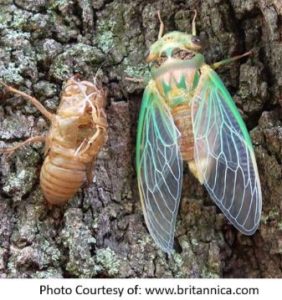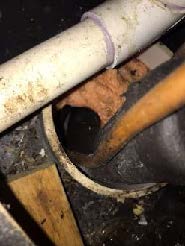Announced Vs. Unannounced Audits
Audit ready all the time. Not too many things scream “a culture of food safety”, but unannounced audits are well on their way. Many, if not most, commercial food manufacturers and distribution centers voluntarily subscribe to third party audits such as those schemes benchmarked to the Global Food Safety Initiative (GFSI) level of standards. Many GFSI audit schemes have been using a rotating unannounced audit cycle, such as one out of every three audits will be unannounced and there are all unannounced audit programs as well. This is a true testament of commitment to food safety and quality.
Unannounced audits are just as they sound, audits occurring without prior notice conducted by a third-party. These audits usually occur during a window thirty days on either side of a certification date. Unannounced audits are designed to ensure that products are being manufactured in compliance with the food safety and/or quality management systems. One of the best ways to show commitment and live the food safety management system is to undergo unannounced audits.
Submitted by: Rich Gibson ACE, CFSQA
Cicadas

Order: Hemiptera Super Family: Cicadoidea Families: Tettigarctidae, Cicadidae
With Cicadas set to emerge from the soil after seventeen years, it is a good time to review some of their details.
The cicadas are a superfamily, the Cicadoidea, of insects in the order Hemiptera, which are “true bugs.” Cicadas have prominent eyes which are set wide apart with short antennae, and membranous front wings. One genus, the periodical cicadas spend most of their lives as underground nymphs, emerging only after 13 or 17 years.
In some species, the males remain in one location and call to attract females. Sometimes several males aggregate and call-in chorus. In other species, the males move from place to place, usually with quieter calls while searching for females. After mating, the female cuts slits into the bark of a twig where eggs are deposited. When cicada eggs hatch, the nymphs drop to the ground and burrow and will spend most of their lives at depths down to about eight feet.
Cicadas are commonly eaten by birds and sometimes by squirrels, as well as bats, wasps, mantises, spiders, and robber flies. In times of mass emergence of cicadas, various amphibians, fish, reptiles, mammals, and birds change their foraging habits to benefit from the abundance.
Cicadas feed on sap; they do not bite or sting in a true sense but may occasionally mistake a person’s arm for a plant limb and attempt to feed. Male cicadas produce very loud calls that can damage human hearing. Control of cicadas can be difficult based on quantity at times. Treatment of soil is possible but not always effective preemergence. Cicadas can be knocked off of trees, shrubs, etc. using a water hose to persuade the pests to relocate.
Submitted by: Rich Gibson, ACE, CFSQA
Rodent Activity & Action

Recently, the Mid-Atlantic Regional Operations Manager (ROM) was contacted by a restaurant for a rodent complaint in a certain area of the facility. The ROM arrived onsite before the client representative to get a jump on the inspection of the exterior and the surrounding areas. The restaurant is situated a large strip mall with numerus common areas for people to sit and eat while shopping.
Early into the exterior inspection it was evident there were issues throughout the common areas. In one section, there were approximately twenty-five exterior landscaping bait stations in a seventy-five-foot radius of the restaurant, not a common practice. Bait stations were even under benches where people were eating and resting from their long day of shopping. Something in the environment has changed and the population of mice were on the move. Upon inspection of the rainwater runoff drains, around sidewalks for borrows and there were plenty to see.
While wrapping up the exterior inspection and assessment, the restaurant Manager arrived. The Manager was interviewed to gain additional information on the issue. The Manager explained the restaurant has been finding rodent droppings under the condiment and hand washing stations. Behaviorally, this is not logical as the station was in the middle of the dining area and they found very little evidence of rodent activity around the tables. After further discussing the concerns and notable activity, the ROM was able to pinpoint the main area of concern, the station and the electrical closet.
After about half an hour of discussions, the interior was further inspected. Fully understanding there was a rodent issue on the exterior, the ROM started looking at the construction of the building itself. Poured cement walls with a 1 in gaps between the outer laminate cover for the restaurant. Mice could easy travel in this gap but would not be able to get to the hot zone where the mice are active. Being the restaurant was built on a cement slab foundation, the ROM started to look for all of the water and electrical lines coming into the building, knowing that in most cases they will be in connection with the underground water run off or sewer system. The ROM then returned to the client to see if they were aware of any connection points. The first place they identified was the condiment station and underneath the station was a six-inch PVC pipe running through the cement slab floor. Now the issue at the station started to make sense.
The mice had gnawed through the top seal of the PVC pipe to enter the restaurant and in the electrical closet the mice are running up the lines coming from under the slab foundation. The ROM reconnected with the location Manager and toured the facility, sharing details of the action plan to be implemented. The plan included the removal of the old covering on the PVC pipeline and the fill in inside of the pipe with exclusion materials while replacing the cover and sealing electrical conduits to prevent additional travel by mice. The RK team then planned and a signature “commercial intensive program”, tailored to fit their specific needs. The program consisted of strategically placing and baiting rodent snap traps. The traps were placed under the hand washing station, drop ceiling voids and in the electrical closet. The client was very happy with the findings and was eager to start the program. After a brief conference call with the owner to go over the findings and review the plan, the restaurant personnel agreed, and the plan was immediately implemented. Since the implementation of the program there has been no reports of active mice and there have been no “call backs”.
- Take away points:
1. Inspect and analyze conditions inside and outside.
2. Discuss details with client such as sightings.
3. Close gaps and openings to exclude pests.
4. Tailor programs to fit specific needs.
Submitted by: Anthony Krakowski
Regional Operations Manager
RK Environmental Services, LLC






